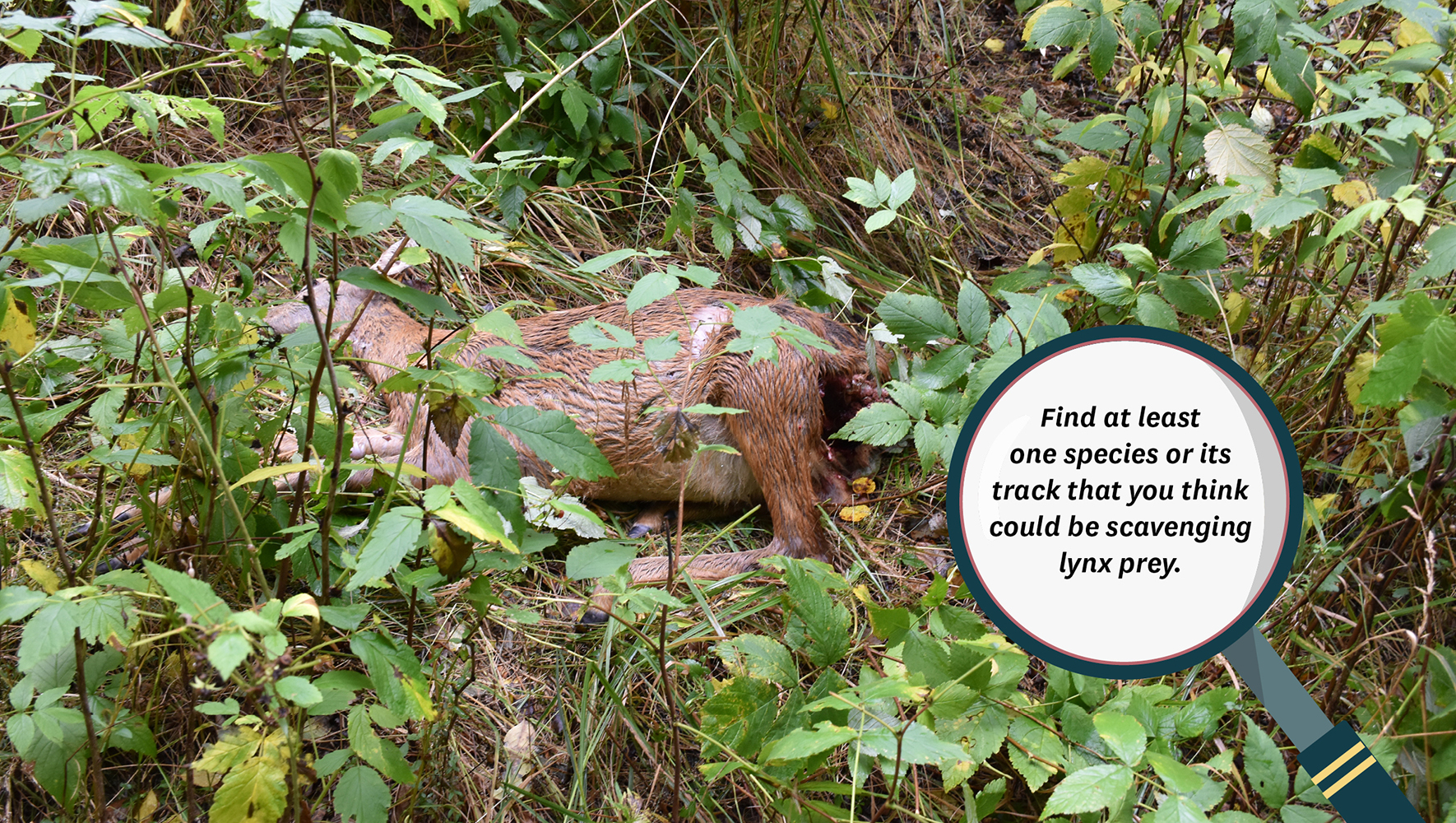After hunting down its prey, the lynx will feed.
They primarily feed on muscle – on average, they need around 2 kilos of meat per day. They bury their prey with surrounding leaves or snow after feeding and can return to feed on it for several days.

They hide their prey to protect the remains from different scavengers, including brown bears, wild boar, foxes, ravens, crows, owls, and eagles. The location is usually several hundred meters away from the hunting place and hidden in bushes where there is a deep layer of leaves or snow.
Research in Slovenia and Croatia has shown that brown bears find 32% of lynx prey remains, and 15% of all large prey killed by lynx is lost due to bears scavenging (kleptoparasitism). The frequency of bear scavenging is strongly dependent on bear activity patterns and is highest during the lynx pregnancy and lactation period when up to half of lynx kills are taken by bears. Consequently, bears are capable of influencing the hunting frequency and diet of lynx.

Brown bear family feeding on lynx prey, author: Miha Krofel. Click on the photo and watch a video of animals scavenging on lynx prey
Most of the information about where and when lynx hide their prey comes from telemetry data received by the collars worn by lynx. This kind of research has been conducted in Slovenia and Croatia a number of times during the last 15 years. When a lynx is recorded returning to the same place several times in a short period of time, it usually means it is returning to its prey. Researchers check these locations and equip them with automatic cameras to see what is coming to feed.
On the recommended Lynx Walk trail, by analyzing telemetry data from collared lynxes, researchers recorded lynx prey more than 5 times during the last 15 years! The last time was when a lynx named Doru, who was the first lynx translocated from Romania to Croatia within the LIFE Lynx project, caught their first prey in this area just 100 meters from the trail!
To find out how does the prey of a lynx looks like, check-in A Fieldguide for Investigating Damages Caused by Carnivores.IMPORTANT: If you see animal remains you think could be leftovers of lynx prey, let us know by sending the information and any photos to us at [email protected], [email protected].
